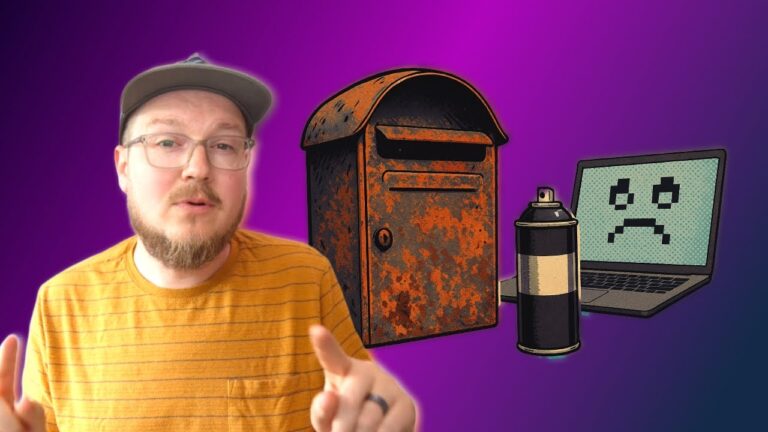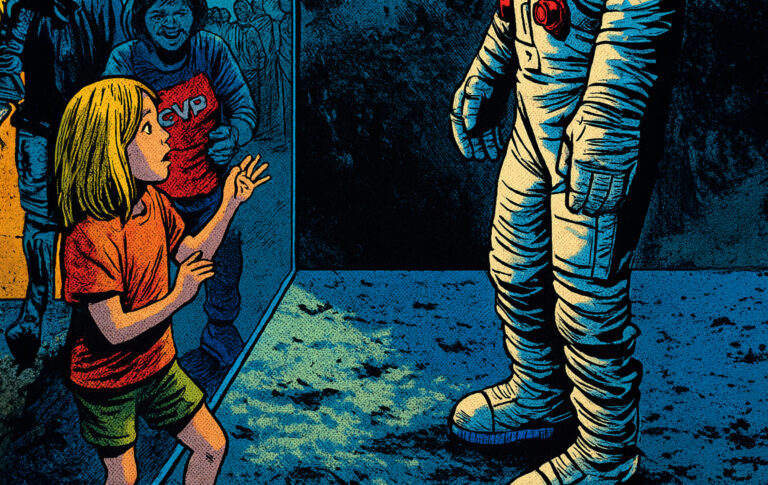I called my boys outside to show the new jungle gym I had just brought home. “Have fun!”
They stared at the pile of metal rods and plastic hand holds laying on the ground, then up to their crazy dad, and back to the mess of parts on the grass. “That’s not a jungle gym…. You need to put it together.” I could see the unspoken “duh” in their eyes, and other mental grumblings about their foolish father wasting their precious youth with one of his “object lessons.”
Papa didn’t raise no fools. But even a fool would know the difference between a jungle gym and a heap of pipes.
But when it comes to marketing, small business owners often mistake a bunch of tools and tactics for a fully assemble marketing strategy. They look at their website, their email marketing campaigns, and their Google Ads, and don’t realize that they are staring at a bunch of rods in the grass. All of these puzzle pieces are still useful in their own right, but if you want to build a strong marketing strategy that’s going to work well and bear a lot of weight, you need to put everything together the right way. And when you are assembling something complex – like a jungle gym or a marketing strategy – you need a blueprint. You need a plan.
What do these blueprints look like? There’s lots of different models that you can explore: funnels, buyer journeys, flywheels, business model canvases, etc. All of these are great frameworks you can use to understand how best to use all of your different marketing tools.
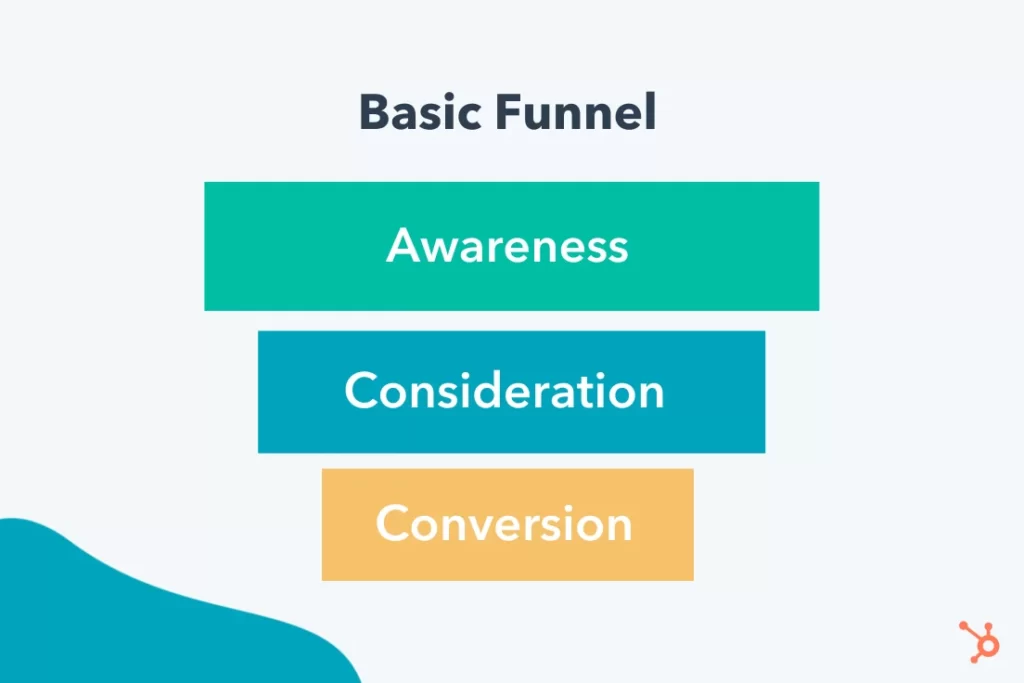
Here’s an example of a very basic funnel. You’ve seen these before in your kitchen. It’s wide at the top and narrow at the bottom, and typically divided into three steps: Awareness, consideration, and then conversion.
This model maps out the different stages of the “buyer’s journey” – their level of awareness and readiness to make a purchase. This helps us understand what methods to use to get the right message in front of our audience at the right time that’s going to have the best chance of moving them down into the next stage. Obviously not all people will become aware of your brand. And of the people who do reach awareness, not everyone will consider you as the right option for them. And not all of those people will convert into buyers. Each stage will have fewer people – the customer pool narrows – hence the “funnel.”
What tools do you have at your disposal to drive awareness of your product or service? Actually, before you even start talking up your business – you need to make people aware of the fact that they have a problem they need to solve in the first place, and you offer something that might be a solution. Paid search ads, blog posts, videos, and other content marketing are some tools you can deploy at this stage. Don’t target keywords that describe your product. Instead, think about the questions your potential customers are asking related to the problem you solve.
The next step is consideration. Here’s where your website plays a major role; along with display ads, videos, and other content that highlight the benefits of using your product or business. As the name suggests, in this stage of the funnel customers are aware that they need something, so they are in the market – researching, comparing, and considering their options. You need to persuade them that you are the best fit.
Finally, it’s time to close the sale and convert your window shoppers and tire-kickers into paying customers. Typically, at this stage, your marketing has already done its job and handed the customer off to the sales department to seal the deal. But marketing and sales have become more and more intertwined over the years, and more customers are making purchases with zero human interaction. Phone calls, site visits, and reps working the floor are still incredibly effective. But so are email nurture sequences, live chat, webinars, and targeted ads paired with really compelling landing pages that explain away all of the objections and drive the customer to “buy now!”
Different tools and tactics can be used at more than one stage of the buyer’s journey. But you will use them differently depending on your goals.
For example, if you sell orthopedic shoe inserts you can use paid ads to get in front of people who are searching for “foot pain relief” and get customers to the Awareness level. After they read an article that you wrote that compares different foot pain solutions, you can begin targeting those same people with paid ads again, but this time with ads that highlight the effectiveness of your inserts over competing options; nurturing your customers through the Consideration stage. And maybe that would be all it takes to get the customer to move ahead with a purchase. But if they need a little more time – they looked at some of your products, maybe even added some to a shopping cart, but didn’t finish checking out – you can use paid ads again to show pictures of the specific product they were looking at, or maybe an add promoting a flash sale or other discount, winning your customers back to the site to finalize a transaction, or Conversion.
The AIDA Funnel
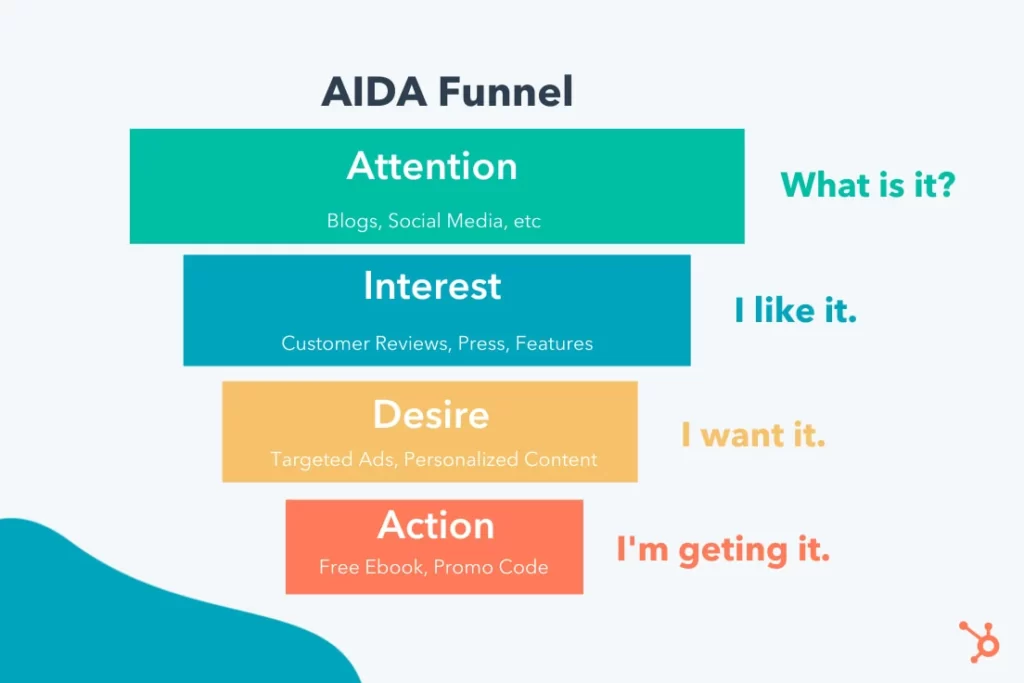
Another popular funnel is divided into four steps: attention, interest, desire, and action (or AIDA for short). It works very similarly to the basic funnel we described above. This one breaks down the “middle of the funnel” or consideration stage into two distinct parts. Personally, I think this is more helpful, because there is a different between interest (“Hmmm, that’s cool.”) and desire (“[drool] I really want that.”), isn’t there?
Mike Michalowicz’s book Get Different is a great primer on the AIDA framework. He actually uses different terminology, but follows essentially the same order. It’s a great read on getting people’s attention and nurturing them to action.
Some people tack on an extra step to the AIDA funnel: Advocacy. After you win a paying customer, you give them such a valuable experience, that they are happy to promote your business and bring new customers into your funnel. This creates a circular pattern that might be better visualized by, say… a wheel?
The Marketing Flywheel
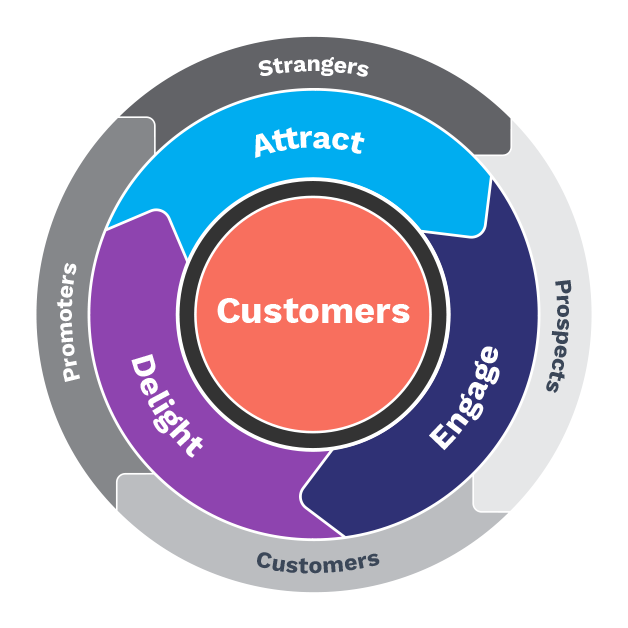
The flywheel model accounts for the advocate/promoter who essentially goes to work for you and helps bring more awareness to your brand. You start with attracting strangers and engage them into prospects, and eventually into paying customers. Then provide value and delight them to the point where your customers become promoters who help you attract more people. This can be done through reviews, testimonials, and referrals. And as your customer base grows, you build momentum and it takes less energy to keep your flywheel spinning.
Customer Value Journey
One of my favorite tools is the Customer Value Journey, developed by DigitalMarketer.com. It takes the flywheel, funnel, and buyer journey models, and mashes it together into a really helpful map. I’m actually certified by Digitalmarketer.com to teach this tool, and I love using this with my clients because it’s one of the most comprehensive models available that’s still simple enough to understand at a glance.
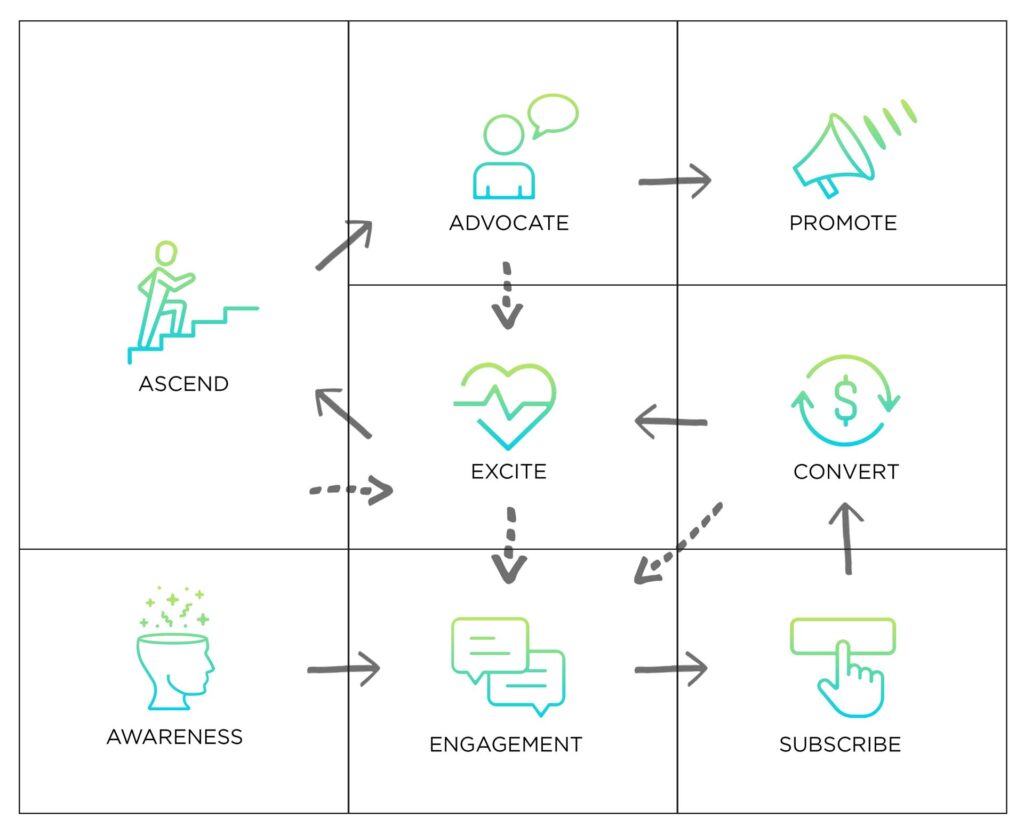
The Customer Value Journey (CVJ) helps you plot out your marketing activities on to each stage – awareness, engagement, subscribe, convert, excite, ascend, advocate, and promote – and visualize how everything works together to move people to your core offer.
Ads, blogs, lead generators, email marketing, promo offers, the product or service itself, all need to work together. And then how can you continue to serve and offer value to your paying customers? How can you expand on your offerings (or ascend people up your value ladder) with upsells or other value ads? And then then how can you delight customers and reach out to them to provide testimonials or case studies and then turn them into promoters, so that, like with the flywheel model, they start recruiting new customers for you? All of these questions are addressed in the Customer Value Journey.
Learn more about the Customer Value Journey here.
It helps you take all your jungle gym pieces, assemble them, understand how they link up, and evaluate any weaknesses or bottlenecks. Perhaps you’re getting a ton of people reading your blog, but nobody is converting on your entry point offer. Maybe this issue is with your lead generator. Or maybe your ads are delivering the wrong traffic. The CVJ – or any of these models for that matter – are very helpful for giving you insight into where all of your different tools fit and how they should be working together.
Business and marketing is not field of dreams. If you build it, people won’t just come. If you make an offer, people won’t just convert. If you dump a bunch of metal pipes and bolts on your yard, your kids aren’t just going to play. Well… maybe that’s not the best metaphor. I can imagine my boys would have a hay-day whacking each other with construction materials. But you get what I’m trying to say.
Have a plan and make sure that you understand how all of your marketing tools and tactics fit together.
How’s your marketing going? Is there a model or funnel or canvas that you like using that works well for you? Drop a comment below.
Or do you need help developing a marketing strategy? Is there a certain tool or step in the sales and marketing process that you’re struggling with? Let me know! I’d be happy to do anything I can to support you along the way in your self-employment journey.

